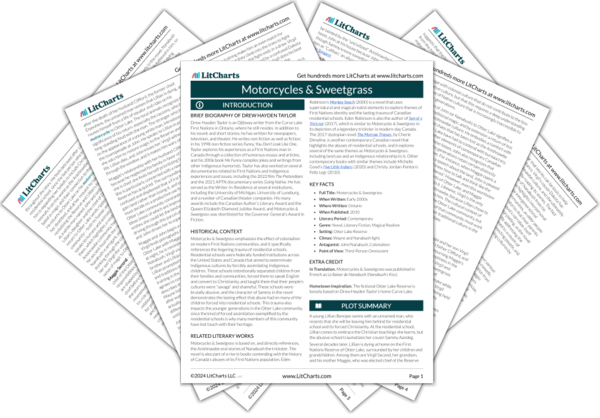Previous
Chapter 16
|
Previous
Chapter 16
|
Motorcycles & Sweetgrass: Chapter 17 Summary & Analysis |
Next
Chapter 18
|


Upgrade to unlock the analysis and theme tracking for all of Motorcycles & SweetgrassMotorcycles & Sweetgrass!
Get LitCharts A+